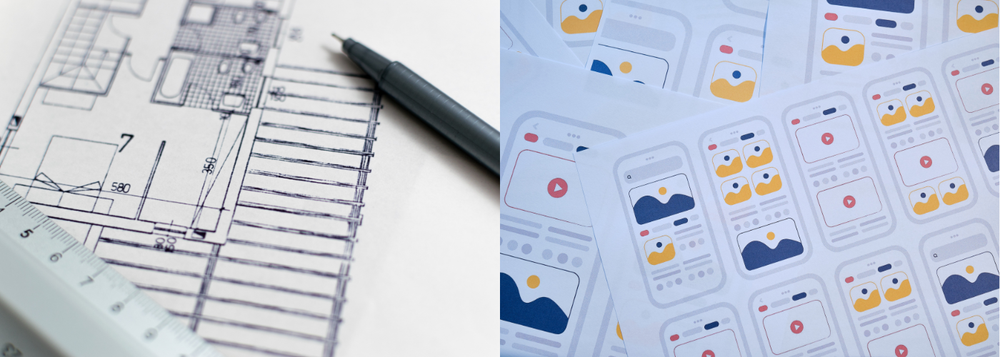From Designing Buildings to Designing Experiences: My Journey from Architecture to UX/UI Design
Hello everyone,
I’m excited to share how my career evolved from designing physical spaces as an architectural engineer to creating digital experiences as a UX/UI designer. While the shift wasn’t planned, it feels like a natural progression in hindsight.
A Foundation in Architecture
I studied architectural engineering for five years, earning my bachelor’s degree, and then worked in the field for two years. During this time, I designed various buildings and created execution plans. This experience allowed me to delve deep into architectural design, planning, and spatial aesthetics. It honed my problem-solving skills and deepened my appreciation for the impact of design on human experience.
Discovering UX/UI Design
As an architect, I was passionate about designing spaces that not only looked beautiful but also served a practical purpose. Over time, I began to see how these same principles applied to the digital world. Just as I designed physical environments with users in mind, I realized that digital interfaces could be approached similarly — where the “spaces” are screens and the “users” are at the heart of every decision. This realization sparked my interest in UX/UI design, blending my love for creating functional and aesthetically pleasing spaces with the challenge of building intuitive digital experiences.
The Turning Point
Despite the satisfaction I found in architectural engineering, I was searching for something with a stronger connection to technology. I discovered that UX/UI combined my passion for design with a new challenge — creating experiences that not only look good but also function smoothly and make users’ lives easier. My growing interest in user experience and interface design led me to make a significant shift. I was intrigued by how design could influence the way people interact with technology and solve real-world problems in a different way.
The Similarities Between Architecture and UX/UI Design
Surprisingly, my background in architecture provided a strong foundation for UX/UI design:
- Both fields require a deep understanding of user needs. In architecture, we design physical spaces for people to inhabit. In UX/UI, we create digital spaces for people to navigate.
- Both involve problem-solving, understanding user behavior and paying attention to details to enhance functionality.
- Just as an architect plans how people will move through a building, a UX designer maps out how users interact with a website or app.
Challenges I Faced
The transition came with its own set of challenges. Shifting from a field focused on physical and spatial design to a digital-first approach required me to adopt new tools, methodologies, and ways of thinking. I had to quickly get up to speed on UX research, user flows, wireframing, and prototyping. Tools like Figma, Adobe XD, and Sketch became essential to my daily workflow. Initially, it was overwhelming, but I embraced the challenge by diving into online courses, tutorials, and plenty of hands-on practice to close the knowledge gap.
Lessons and Advice for Aspiring Designers
- Leverage Your Past Experience: Whatever field you’re coming from, there are always transferable skills. My experience in architecture gave me a unique perspective on spatial design, user needs, and problem-solving.
- Continuous Learning: The design field is always evolving. New tools, frameworks, and methodologies emerge regularly. Stay curious and never stop learning. Online resources like Coursera, Udemy, and design communities are invaluable.
- Don’t Fear the Unknown: Shifting to a new career can be daunting, but if you’re passionate about design, it’s worth the effort. Start small, build your skills, and always seek feedback.
Conclusion
Today, I’m proud to call myself a UX/UI designer. The journey from architecture to UX/UI has been both challenging and rewarding, and I’ve found a field that perfectly blends my passion for design and problem-solving with the ever-evolving world of technology. To anyone considering a similar shift, I say go for it. Embrace the learning curve and the new opportunities it brings — you never know where it might lead you.



